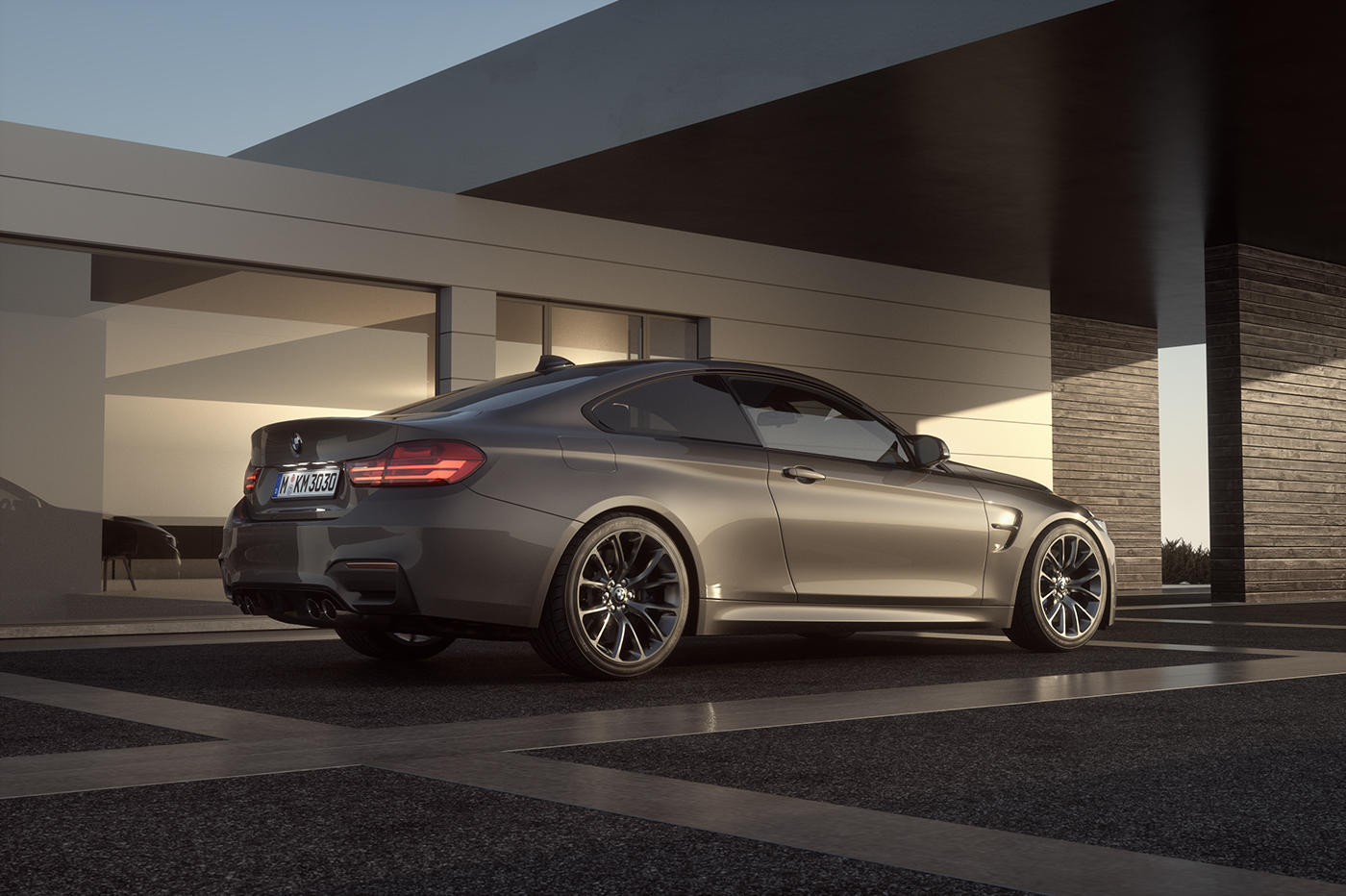At the beginning of 2019, we were announcing an upgrade in our GPU line-up. The new GPUs at the time (Nvidia® Tesla K80) came with almost double speed compared to the old ones, and three times more memory.
Now it’s time for a new upgrade. We are jumping forward three hardware architecture generations, from Kepler to Volta, and we’re powering new machines with Nvidia® V100 Tensor Core GPUs. The new GPUs are, as described by Nvidia, “The Most Advanced Data Center GPU Ever Built” and bring even more speed and 16 GB of RAM for your renders. As with the previous upgrade, there is no increase in the price you are paying for our services – this is a free performance upgrade. The new machines are live at this moment (in fact, they have been live for a while now, introduced gradually in production). And we’ve run the numbers for you, to see exactly how much better they are.
We started with the standard battery of tests from the official Blender benchmark. As those scenes are quite old now, we added a couple of new ones as well: the shots from the latest Blender movies: Agent 327 (Barbershop) and Spring. Check out the render times with Blender 2.82a below, with the new GPUs being shown in green.
1. BMW27, 960 x 540 px, 1,225 Samples (35 squared)
The simplest scene in this batch, the BMW, shows a 25% speed increase with the V100 GPUs. The render time gets close to half a minute with the standard settings now.
2. Classroom, 1,920 x 1,080 px, 300 Samples
Blender Bmw Benchmark Results
- Blender has an eclectic mix of requirements, from memory bandwidth to raw performance, but like Corona the processors without HT get a bit behind here. The high frequency of the 9900K pushes it.
- Check out the render times with Blender 2.82a below, with the new GPUs being shown in green. BMW27, 960 x 540 px, 1,225 Samples (35 squared) Benchmark 1 – BMW. Render time in h:mm:ss, lower is better. The simplest scene in this batch, the BMW, shows a 25% speed increase with the V100 GPUs.
The same kind of speed-up (25%) can be observed in the Classroom scene as well. The new V100 machines bring the render time under the two-minute mark for this scene.
Free Blender 3D models. Free 3D Blender models available for download. Available in many file formats including MAX, OBJ, FBX, 3DS, STL, C4D, BLEND, MA, MB. Find professional Blender 3D Models for any 3D design projects like virtual reality (VR), augmented reality (AR), games, 3D visualization or animation.
3. Fishy Cat, 1,002 x 460 px, 1,000 Samples
Blender Bmw Benchmark Settings

The Fishy Cat benchmark shows a 27% improvement with the new GPU configuration. The results are quite consistent so far, with all the scenes showing a similar decrease in the render times.

4. Koro, 720 x 1,280 px, 500 Samples
The cute llama sports a speed increase in the same range as the other three benchmarks: 23% decrease in render time with the new V100 boards. It’s interesting to see that the fur-heavy scenes behave the same way as scenes that do not contain hair. Traditionally, hair rendering has been a tough nut to crack, and it’s nice to see consistent results now.
5. Pabellon Barcelona, 1,280 x 720 px, 1,000 Samples
The Pavillion Barcelone scene only benefits from a 20% increase in speed. The new render time is under three minutes, quite fast for a complex project.
6. Victor, 2,048 x 858 px, 600 Samples
The most complex and the most memory-hungry scene in the original benchmark set receives a 19% increase in speed. While no further than 14 months ago this scene couldn’t render on our GPUs because of the memory requirements, now it can be completed on these new machines in just a hair over 5 minutes.
7. Barbershop, 2,048 x 858, 32 AA samples
The first one of the new scenes used for testing the GPU upgrade is the Barbershop one from Agent 327. It’s also the one with the most interesting result: the new GPUs are a bit slower than the old ones. My educated guess is that the anomaly is caused by the way the rendering is optimized internally for this scene. There are probably quite a few tiles that are taking a long time to complete. And this may allow Blender to better parallelize the processing in the previous setup with 4 GPUs. Hopefully, this is something that can get addressed in future optimizations that are coming for Cycles, as most people only have a single GPU in their machines.
8. Spring, 2,004 x 1,000, 300 samples
The last benchmark is a scene from the most recent movie released by the Blender Institute – Spring. This scene shows the most significant speed improvement as well: 36%. The bigger than average speed increase may be caused by the fact that Spring is the only scene from this set which has been created using Blender 2.80. It may also be a matter of how the scene was optimized by the Blender team – or a combination of the two. The fact remains though, that this render benefits the most from the hardware upgrade.
I know that you are always looking for the best possible solution for rendering your projects. This is why we are constantly working on providing it – from our periodic hardware performance upgrades to the unique monthly plan RenderStreet One and to the constant software updates to our platform. We are working as we speak on a couple more surprises that are to be released soon, which will make your life even easier. Happy rendering, keep close and be safe!
Setting up blueprints in Blender
Okay, to start out your going to need to get an image of the blueprints you want, I've chosen to use the BMW M5 (E60).After you have chosen the image you like you're going to need to take it into a photo editing program and cut out each picture and save it in its own view. For this one I just used MS Paint because it is a free program just like blender, you could also use The Gimp, which is also free, but MS Paint is all you need for doing this.
Now that you have that set up go ahead and launch Blender. If you still have the setup in its default format it should only be showing one box for the 3D model.
Next we have to split the view area into 4 different sections. To do this hover your mouse in between the 3D modeling area and the top header and right click.
Left click on “Split Area” and move the mouse down. A vertical line will be following your mouse. This is where the split will occur. Try to set it directly across the center of the viewing area, use the Axis's to help you.
Now you need to split each of the two sides in half again, this time right click on the center line to split them. Also remember to try to put the in the center across the Axis lines.
Now your view should be split into 4 different areas. After that we need to change the camera views of each section. The sections that we want are a Top, Side, Front, and Perspective view. You can change the view in each of them by opening up view and changing them or by using your Num Pad. To choose which ones will be what view should be set up the way drafting is used.
Alright with that set up its just one more easy step and that's putting your blueprints on the correct views. We will start out with the side view, in its header click on view and go down and click on background image.
It should open up a new mini window called Background Image. Click “Use Background Image” and then click on the folder icon to go into the file menu.
Now go and find your image of your top view and click on it and then click on “Select Image
Now your Image should be set in place, the only problem is that blender guesses the size that you want the picture to be so it may have to be adjusted later. You can change the Translucency (Blend), size, and offset if you please, but just remember that the other pictures have to correspond with this one so if you move things might not line up very well.
NOTE: I change the blend to 0 so that I can see the images easier, but that a personal preference.
After you have decided that that is the way you want the picture, close the background image window and repeat those steps on the side and front views.
Okay, with them all in now we have to worry about the sizes. As you can easily tell that with the base box in there the front view is way too big. So what I am going to do to determine there size is scale (S) the size of that base box to match the side and top view since you can tell by the gray guide lines that they are set at the right scale.
*NOTE: To get the box transparent hit the “z” key in the view that you want it transparent.
Well that wasn't too hard now we need to change the size of the front view to match the box that is already created. So go back into view and change the size until it fits into the box.
Alright now that that is complete I recommend saving you file off. You no longer need the original base box so you can delete it if you wish or start modeling with it.
NOTE: I know that I did not set up the back view. This is because blender will use the same picture for the front and back view. If you want to get into the back view, hold ctrl while selecting the front view. Ctrl flips the camera to the other side ex: Front to Back and Top to Bottom. But you'll still have to change the image each time you switch it.
I suggest using the Perspective camera and put it onto the Back View and set your image there, then each time you set it back to the back view it will show the picture, but when it is in any other angle it will show nothing.
Well that's the tutorial how you model it is up to you. I hope this answered some of the questions you may have had, if you have anymore contact me at poke_a_fish@yahoo.com and I'll try to answer them.
Good luck and have fun,Scott Sherrick aka. poke_a_fish
